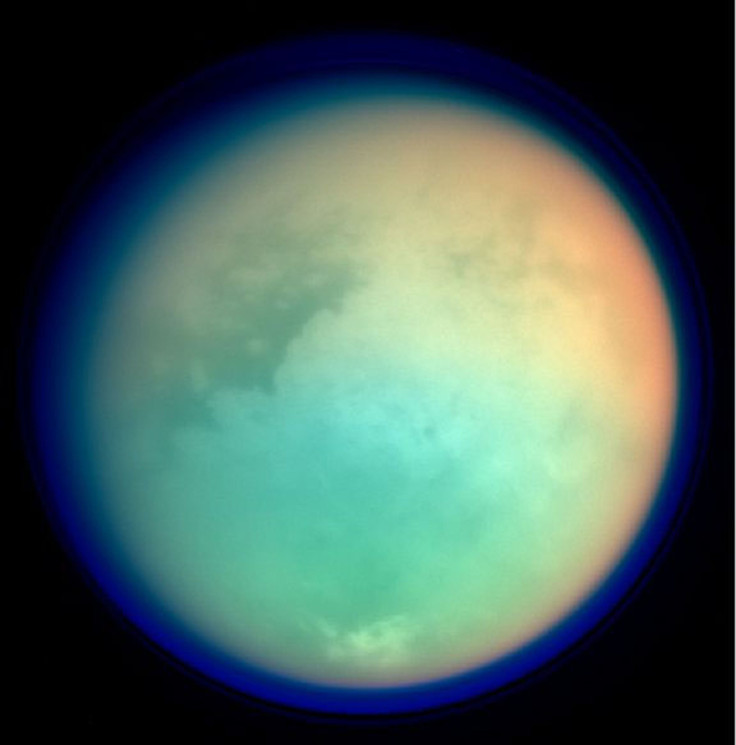Saturn Moon Titan Mystery: Unusual Secret Behind Thick, Nitrogen-Rich Atmosphere

Saturn's largest moon Titan's thick, nitrogen-rich atmosphere has long fascinated scientists, and researchers may have just unlocked more of its secrets.
A new study by the Southwest Research Institute published in the Astrophysical Journal revealed that Titan may be "cooking" organic material in its interior, resulting in an unusually thick atmosphere. According to Dr. Kelly Miller, lead author of the study and research scientist in SwRI’s Space Science and Engineering Division, Saturn's biggest satellite is the only moon in the solar system with this kind of atmosphere.
What also makes Titan unique is that it is the only body in the solar system besides Earth which contains large amounts of liquid on its surface. Instead of water, however, Saturn's moon has liquid hydrocarbons.
"A lot of organic chemistry is no doubt happening on Titan, so it’s an undeniable source of curiosity," Miller said in a statement.
Titan's atmosphere is composed mainly of nitrogen gas, much like Earth's, but much denser and thicker than the atmosphere of our planet. Scientists previously theorized that ammonia ice from comets was converted into the nitrogen that now makes up Titan's atmosphere by either impacts or photochemistry. However, the new study addresses the remaining mystery this theory did not answer, which is the effects of complex organic material that makes up a substantial portion of comets.
Another thing that makes the Saturn moon's atmosphere unusual is that it is composed of 5 percent methane. This gas reacts rapidly, by astrophysical standards, to form organics that gradually fall to the ground. Despite this, Titan still has a significant methane atmosphere, so either it is replenished consistently or this is just a unique, temporary occurrence.
For the study, Miller's team made use of the data from European Space Agency probe Rosetta. The spacecraft studied 67P/Churyumov-Gerasimenko, a distant comet, and among its findings is that the object was roughly half ice, a quarter rock and a quarter organic material. And these materials, which have been around since the early days of the solar system, could have been the primary ingredients in the formation of Titan.
"Comets and primitive bodies in the outer solar system are really interesting because they're thought to be leftover building blocks of the solar system," Miller said. "Those small bodies could be incorporated into larger bodies, like Titan, and the dense, organic-rich rocky material could be found in its core."
With the help of this data, Miller's team calculated that the organic material in comets, if it were in Titan's core, could produce gases similar to its current atmosphere. The gases in the atmosphere may be replenished by Titan's toasty interior, based on thermal models. About half of Titan's nitrogen atmosphere, and all of the methane, could be the result of organics "cooking" in the interior of Saturn's moon.
© Copyright IBTimes 2024. All rights reserved.





















